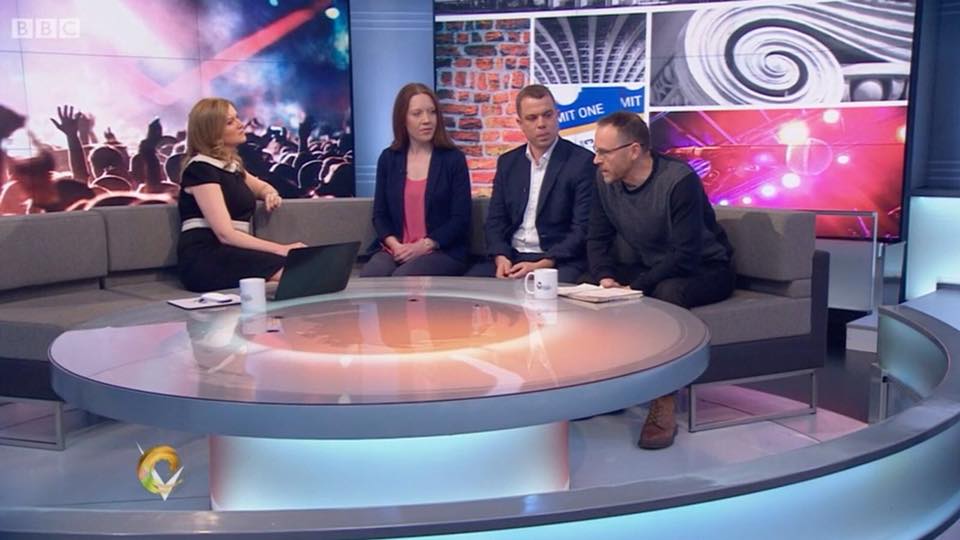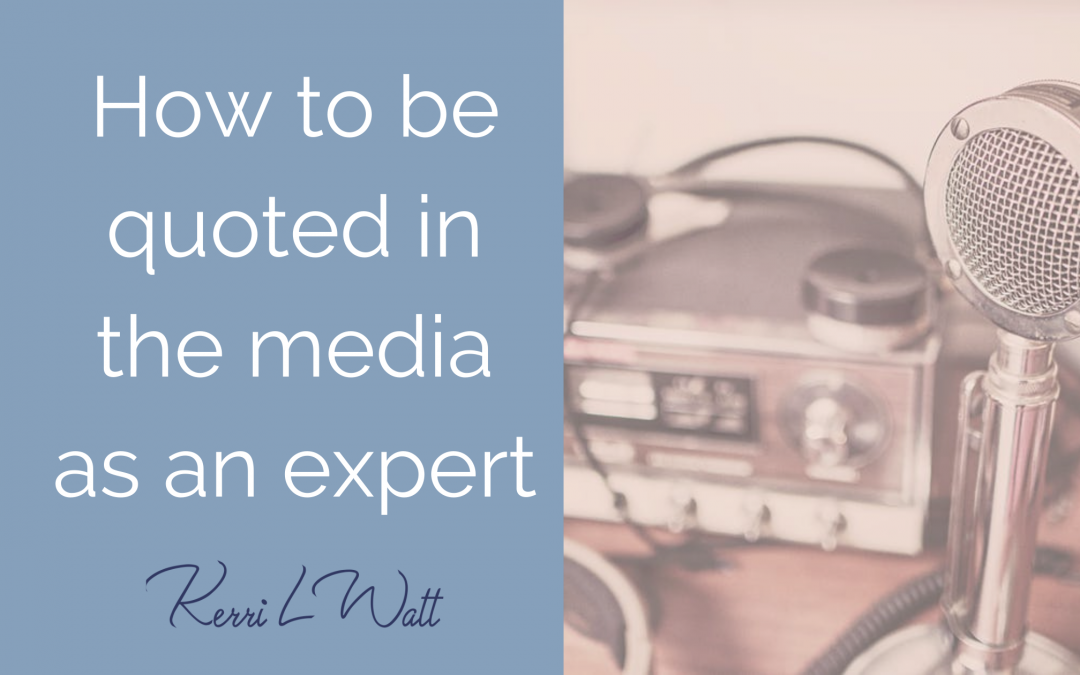Featuring in the media as an incredible way to boost your credibility. An amazing way to start appearing in the press (and actually one of the easiest PR strategies) is to provide an ‘expert comment’ and jump in on a story the media is already writing about.
First of all, ‘experts’ are coined this by those that follow them or read or watch them speak. It isn’t a title that you need to give yourself and I actually wouldn’t necessarily recommend it either. Other people make the decision that you have some expertise and will see you as an expert after seeing you speak, reading your book or reading your opinion on something.
Your dream clients may see you on the tele box and think “Wow this is someone I need to listen to”.
And even if they don’t see your media opportunity immediately when it’s published, a media strip of well-known logos in an ‘As Seen In’ image is always going to make an impact on those landing on your website.
You may also like to read: ‘How to be invited on TV as an industry expert’.
I get asked a lot about how to get an expert comment mentioned in the media so here’s how to easily make it happen for you or your colleagues…
1. Focus on 1-3 topics
Brainstorm the topics or campaigns you can (or want to) talk about. To keep things simple, whittle the list down to your favourite 1-3 key topics. That could be ones you want to be known for or those that you know your ideal customers or audience would be keen to hear about.
Having a focus for your PR efforts will enable you to stay on track with your messages and so you aren’t trying to manage 15 messy campaigns at once. Less is more after all.
2. Do your homework
Start researching media, producers and journalists that work for the media organisations you want to appear in. Get their email address and keep it in a safe spot for later. Try not to add random people to your list, it’s about quality over quantity and 20 journalists that currently write about your specialist subjects and could be inetrested in your story is WAY more valuable than 500 random names to blast irrelevant news to.
3. Set a goal and make a plan
Keep yourself accountable with a plan of action and a few goals. My grandad always taught me to make a plan and work backwards. So start with the big goal then break it down into smaller goals in a timeline.
So if you know you need to get some media wins in soon, state an amount and set a date by it. Then pencil in time in your diary to take action and make it happen.
4. Proactive vs reactive PR
Consider whether you will be proactive or reactive in your approach. Both have different strategies and activities you would focus on.
Being proactive would include you cold pitching a brand new idea to someone who isn’t expecting it. Reactive would be reacting live to current media stories and jumping in on the conversation with the aim of getting your quote published in a journalists next piece about the story.
Personally I like a good mix and always make notes on both how I’ll react to news stories and who I’ll proactively approach with the ideas.

5. Introduce yourself
When you reach out to journalists, remember to actually give them something to go by. Try to avoid just a “Hi, I’m here if you need me” email. Yawn.
A stranger doesn’t owe you anything and isn’t going to bust their butt to find a place for you in their newspaper if you can’t show them you know who their audience is or given them an example of what you can say or write about. Do the work for them and tell them how you can help them by mentioning potential topics for your expert comment.
SUPER MEGA PR TIP: This is your opportunity to showcase you’ve done your homework and are a good fit for them and their audience – don’t just copy and paste a War and Peace length CV!
6. Check out who else is covering the story
Google certain keywords around your topics of expertise and then click the ‘news’ tab to see what is currently in the media. You can then use this as an opportunity to reach out to the writers of those pieces and offer yourself as an expert to comment should they write any follow-up pieces.
7. Keep a record
Once you’ve started putting together a list of potential media organisations to contact, it’s ideal to pop them into a spreadsheet.
List of all your media contacts with their contact details, the date you contacted them and what you offered them e.g. an expert comment on a particular news story that broke that morning.
Keeping a note of why you reached out is immensely helpful for future reference if you want to contact them again.
TECHY PR TIP: Google Docs and Sheets are great for this because you can pick it up on your phone, laptop, computer, basically anywhere with internet access. If, like me, you work across multiple devices this is amazing to only have it stored on one hard drive.
8. Shout out on social
Shout out on social media, especially Twitter, that you are available to offer comments on particular topics (or a specific story if the media are talking about it today), add your email address and use any relevant hashtags to the topic.
This one is great for boosting your credibility with your audience because they’ll start to see you as an authority figure as well as having the bonus of getting in front of journalists.

